India Launches Chip-Based E-Passports to Enhance Travel Security Syllabus:Security
Syllabus:Security
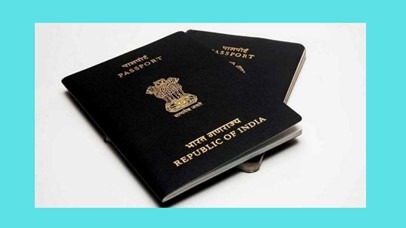
- India has officially launched chip-based e-passports as part of its ongoing digital transformation of travel documentation. These advanced passports, embedded with RFID chips and biometric data, aim to enhance the security, efficiency, and convenience of international travel for Indian citizens. This move positions India alongside countries like the USA, UK, and Germany, which have already implemented similar e-passport technologies.
Why in the News?
- On April 1, 2024, the Government of India, through the Passport Seva Programme Version 2.0, began the nationwide rollout of chip-based e-passports. This initiative marks a key milestone in modernizing travel infrastructure and ensuring secure, tamper-proof documentation. It also aligns with the introduction of new passport rules in 2025.
Key Features of Chip-Based E-Passports
- Embedded RFID Chip & Antenna: Securely stores biometric and personal data.
- Enhanced Security: Difficult to forge or duplicate, ensuring higher safety.
- Scannable Barcode: Enables easy digital access to residential addresses for immigration officers.
Objectives
- Improve passport security and global compatibility.
- Streamline immigration processes and reduce fraud.
- Support Digital India and promote paperless governance.
- Implementation and Rollout
- Pilot Launch: April 1, 2024.
- Cities Currently Issuing E-Passports: Chennai, Jaipur, Hyderabad, Nagpur, Amritsar, Goa, Raipur, Surat, Ranchi, Bhubaneswar, Jammu, and Shimla.
- Issued through selected Regional Passport Offices (RPOs).
New Passport Rules (2025)
- Birth Certificate: Mandatory for those born on or after October 1, 2023.
- Residential Address: Digitally embedded in the e-passport, no longer printed on the last page.
- Parents’ Names: Removed from the passport to streamline personal data.
- Significance
- Aligns with global best practices in passport security.
- Supports paperless immigration and enhances data privacy.
- Demonstrates India’s commitment to tech-based governance and modernization.
- This shift to chip-based e-passports marks a significant leap toward a more secure and efficient system, contributing to both national and international travel modernization efforts.
onsider the following statements regarding India’s rollout of chip-based e-passports:
- The chip-based e-passports are embedded with RFID chips and biometric data to improve security and efficiency.
- The e-passports are issued nationwide as part of the “Passport Seva Programme Version 1.0.”
- The new passport rules will make birth certificates mandatory for individuals born on or after October 1, 2023.
- Parents’ names have been removed from the new e-passports to streamline personal data.
Which of the above statements is/are correct?
A. 1 and 2 only
B. 1 and 3 only
C. 3 and 4 only
D. 1, 3, and 4 only
Answer: D) 1, 3, and 4 only
Explanation:
- Statement 1 is correct: The chip-based e-passports are embedded with RFID chips and biometric data, enhancing passport security and efficiency.
- Statement 2 is incorrect: The e-passports are part of the “Passport Seva Programme Version 2.0,” not Version 1.0.
- Statement 3 is correct: The new passport rules (2025) require birth certificates for applicants born on or after October 1, 2023.
- Statement 4 is correct: The new e-passports remove parents’ names to streamline personal data.
Amex and HSBC Top Credit Card Additions Among Foreign Banks in FY25
Syllabus:Economy
- In a significant recovery from previous declines, foreign banks like HSBC and American Express have emerged as key players in the credit card market, with impressive net additions in FY25, as per data released by the Reserve Bank of India (RBI).
- HSBC added 216,997 cards, while American Express saw a net addition of 107,086 cards.
- This surge reflects a resurgence in consumer credit demand, contributing to the overall industry expansion, with more than 8 million new credit cards issued across all banks in FY25.
Why in News?
- On May 7, 2025, the RBI highlighted that HSBC and American Express topped the list for net credit card additions among foreign banks in FY25.
- This marks a sharp recovery for American Express, which had previously witnessed a decline in its card base.
- The credit card industry as a whole added over 8 million cards, reflecting increasing consumer appetite for credit and the growing adoption of digital payments.
Key Highlights:
- HSBC: Added 216,997 cards in FY25, a stark turnaround after a decline of 38,693 cards in FY24.
- American Express: Net addition of 107,086 cards in FY25, a significant increase from just 11,450 cards in FY24.
- Standard Chartered: Experienced a decline of 158,322 cards in FY25.
- Industry Total: Over 8 million new credit cards issued across all banks in FY25.
Background:
- Foreign banks faced several challenges in expanding their credit card base in India, including limited branch presence, regulatory hurdles, and intense competition from domestic banks. Notably, American Express had been under restrictions by the RBI in 2021 due to non-compliance with data localization requirements, but these restrictions were later lifted.
Aim & Objectives of Expansion:
- Capture growing demand: Tap into India’s expanding middle class, which is increasingly adopting digital payments and consumer credit.
- Strengthen premium market share: Targeting high-income consumers with premium credit card offerings.
- Align with India’s fintech growth: Support the country’s push towards a cashless economy and the rapid growth of its fintech ecosystem.
Significance:
- The surge in credit card additions reflects the revival of foreign banks’ retail operations in India.
- The growth in consumer credit demand signals rising consumer confidence and economic recovery in India.
- It highlights India’s ongoing transition towards credit-driven consumption, in line with the country’s evolving economic landscape.
Consider the following statements regarding the recent growth in the credit card market in India for FY25:
- HSBC and American Express were the leaders in net credit card additions, with HSBC adding over 200,000 cards and American Express adding more than 100,000 cards.
- The overall credit card industry in India saw a decline in the number of cards issued during FY25.
- American Express had faced restrictions by the Reserve Bank of India (RBI) in 2021 due to non-compliance with data localization norms, which were later lifted.
- Foreign banks in India have traditionally struggled to expand their credit card base due to competition from domestic banks, regulatory hurdles, and limited branch presence.
Which of the above statements is/are correct?
A) 1 and 3 only
B) 2 and 4 only
C) 1, 3, and 4 only
D) 1, 2, and 3 only
Answer: C) 1, 3, and 4 only
Explanation:
- Statement 1: HSBC added 216,997 cards, and American Express added 107,086 cards in FY25.
- Statement 2: The overall credit card industry saw an increase in the number of credit cards, with over 8 million cards added in FY25.
- Statement 3: American Express had faced restrictions in 2021 for non-compliance with RBI’s data localization norms, which were later lifted.
- Statement 4: Foreign banks, including American Express, have traditionally faced challenges due to limited branch presence and strong competition from domestic banks.
Cabinet Approves ₹11,828 Crore Expansion Plan for Five IITs
Syllabus:Polity
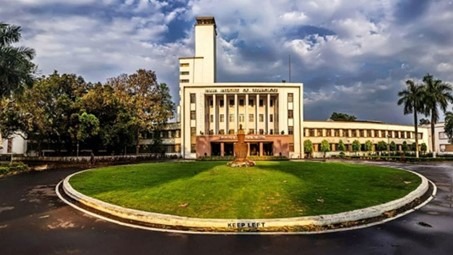
- In a significant move to enhance India’s higher education system, the Union Cabinet, led by Prime Minister Narendra Modi, has approved the Phase-B expansion of five newly established Indian Institutes of Technology (IITs) in Tirupati, Palakkad, Bhilai, Jammu, and Dharwad. This expansion, which involves an investment of ₹11,828.79 crore over four years, is aimed at boosting student intake, creating new faculty positions, and developing cutting-edge research parks to strengthen industry-academia collaborations.
Why in the News?
- On May 7, 2025, the Union Cabinet sanctioned the Phase-B expansion plan for these five IITs, which were set up after 2014. The decision is expected to increase student intake by over 6,500 students, improve research capabilities, and enhance infrastructure, contributing to the creation of a more robust innovation ecosystem.
Key Highlights of the Cabinet Decision:
- Total Financial Outlay: ₹11,828.79 crore (for 2025–2029).
- Target IITs: IIT Tirupati (Andhra Pradesh), IIT Palakkad (Kerala), IIT Bhilai (Chhattisgarh), IIT Jammu (Jammu & Kashmir), and IIT Dharwad (Karnataka).
- Student Intake: Capacity will increase by 6,576 students, reaching a total student strength of 13,687.
- Faculty Posts: Creation of 130 new professor-level positions (Level 14 and above).
- Research Parks: Five state-of-the-art research parks to foster stronger industry-academia linkages.
Implementation Timeline (Student Capacity Increase):
- Year 1: +1,364 students
- Year 2: +1,738 students
- Year 3: +1,767 students
- Year 4: +1,707 students
Objectives of the Expansion:
- Enhance the quality of education and research to match global standards.
- Meet the increasing demand for engineering and technology programs in India.
- Strengthen India’s position in the global STEM (Science, Technology, Engineering, and Mathematics) landscape.
- Encourage regional development by establishing world-class institutions across India.
- Generate employment opportunities through increased academic and administrative staff.
Background:
- These five IITs were established post-2014, with IIT Tirupati and IIT Palakkad beginning their academic operations in 2015–16, and IIT Bhilai, IIT Jammu, and IIT Dharwad in 2016–17.
- Initially operating from temporary campuses, all five IITs have now shifted to their permanent campuses.
Static Facts:
- Total IITs in India:
- The student strength in IITs has doubled from 65,000 to 1.35 lakh over the past decade.
- Admissions: Based on JEE Advanced rankings, IITs offer nationwide admission.
Significance:
- Reduces educational inequality by making world-class education accessible to a broader range of students.
- Boosts local economies through infrastructure development and job creation.
- Aligns with Atmanirbhar Bharat by nurturing a knowledge-driven society.
- Supports India’s ambition to become a global innovation hub and a leader in technology and research.
- This ambitious plan is a step toward not only improving India’s higher education infrastructure but also ensuring that the country remains at the forefront of global innovation and economic progress.
Consider the following statements regarding the recent expansion of Indian Institutes of Technology (IITs) approved by the Union Cabinet:
- The Phase-B expansion of IITs aims to increase student intake by over 6,500 students across five newly established IITs.
- The expansion plan involves a financial outlay of ₹11,828.79 crore over four years, from 2025 to 2029.
- The expansion will result in the creation of 130 new faculty posts at the Assistant Professor level.
- The five IITs targeted for the expansion are located in Andhra Pradesh, Kerala, Chhattisgarh, Jammu & Kashmir, and Karnataka.
Which of the above statements is/are correct?
A. 1, 2, and 4 only
B. 2, 3, and 4 only
C. 1 and 4 only
D. 1 and 2 only
Answer: A
Explanation:
- Statement 1 is correct: The Phase-B expansion aims to increase student intake by over 6,500 students across five IITs.
- Statement 2 is correct: The total financial outlay is ₹11,828.79 crore for the period 2025–2029.
- Statement 3 is incorrect: The expansion will create 130 new professor-level positions (Level 14 and above), not Assistant Professor level.
- Statement 4 is correct: The targeted IITs are located in Andhra Pradesh, Kerala, Chhattisgarh, Jammu & Kashmir, and Karnataka.
List of Missiles of India: Types, Ranges, and Key Facts for Exams
Syllabus:Defence
- India’s missile development program is a key indicator of the nation’s technological advancements and strategic defense capabilities.
- Led by the Defence Research and Development Organisation (DRDO), India’s missile arsenal is designed to fulfill a variety of defense objectives, ranging from nuclear deterrence to precision strikes, across both land and sea domains.
- India’s missile systems include an extensive array of ballistic missiles, cruise missiles, and anti-aircraft defense systems.
- These systems are crucial for addressing security threats from neighboring countries like China and Pakistan.
- The foundation for India’s missile prowess was laid by the Integrated Guided Missile Development Program (IGMDP), launched in 1983.
What is a Missile?
- A missile, or guided missile, is a self-propelled weapon equipped with a guidance system that allows it to hit specific targets with high precision.
- Missiles can be launched from various platforms, including land, air, sea, and underwater.
- Depending on their mission, they may carry either conventional or nuclear warheads.
Types of Missiles in India
- India classifies its missile inventory based on several parameters, including launch platform, trajectory, range, speed, guidance system, and warhead type.
- Based on Launch Platform
- Surface-to-Surface Missiles (SSM)
- Surface-to-Air Missiles (SAM)
- Air-to-Air Missiles (AAM)
- Air-to-Surface Missiles (ASM)
- Sea-to-Sea Missiles
- Sea-to-Surface Missiles
- Submarine-Launched Ballistic Missiles (SLBM)
- Anti-Tank Guided Missiles (ATGM)
- Based on Trajectory
- Ballistic Missiles
- Cruise Missiles
- Based on Range
- Short-Range Ballistic Missiles (SRBM)
- Medium-Range Ballistic Missiles (MRBM)
- Intermediate-Range Ballistic Missiles (IRBM)
- Intercontinental Ballistic Missiles (ICBM)
- Tactical Missiles
- Based on Speed
- Subsonic Missiles
- Supersonic Missiles
- Hypersonic Missiles
- Based on Guidance System
- Inertial Navigation
- Active Radar Homing
- Infrared Homing
- Laser Guidance
- GPS/NavIC-based Guidance
- Based on Warhead Type
- Conventional (high-explosive)
- Strategic (nuclear-capable)
Key Facts for Exams:
- The Integrated Guided Missile Development Program (IGMDP) was launched in 1983 to develop missiles like Agni, Prithvi, Akash, Trishul, and Nag.
- Tessy Thomas, known as the “Missile Woman of India”, was the former Project Director of Agni-IV and is currently the Director General of Aeronautical Systems at DRDO.
- Prithvi was India’s first indigenously developed surface-to-surface missile using liquid fuel technology.
- BrahMos is a joint venture between India and Russia and is known for being the world’s fastest supersonic cruise missile.
- Agni-V marked India’s entry into the league of ICBM-capable nations, significantly enhancing its strategic deterrence.
Consider the following statements about India’s missile development program:
- The Integrated Guided Missile Development Program (IGMDP) was launched in 1983 with the aim to develop a range of missiles, including Agni, Prithvi, Akash, and Trishul.
- The BrahMos missile is a joint venture between India and Israel, and it is known as the world’s fastest supersonic cruise missile.
- Tessy Thomas, known as the “Missile Woman of India,” was the former Project Director of Agni-IV and currently heads the Aeronautical Systems division at DRDO.
Which of the statements above is/are correct?
A. 1 only
B. 1 and 3 only
C. 2 and 3 only
D. 1, 2, and 3
Answer: B
Explanation:
- Statement 1 is correct. The IGMDP, launched in 1983, was responsible for developing missiles like Agni, Prithvi, Akash, Trishul, and Nag.
- Statement 2 is incorrect. BrahMos is a joint venture between India and Russia, not Israel.
- Statement 3 is correct. Tessy Thomas is indeed known as the “Missile Woman of India” and was the former Project Director of Agni-IV.
Arunachal Pradesh Drills First Geothermal Production Well
Syllabus:Geography
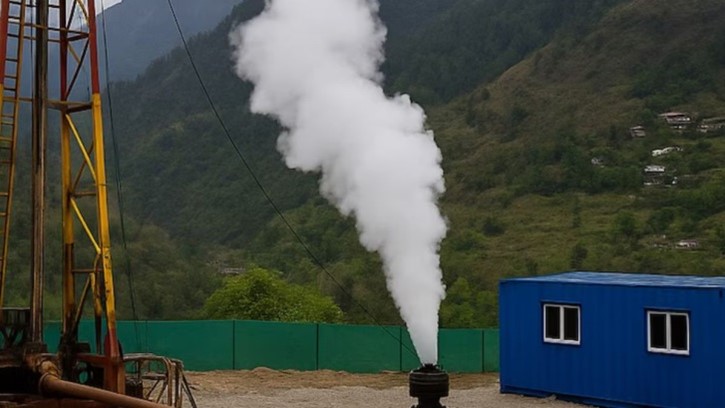
- India has made a significant step towards sustainable and renewable energy with the successful drilling of the first geothermal production well in Dirang, located in the West Kameng district of Arunachal Pradesh. This groundbreaking achievement by the Centre for Earth Sciences and Himalayan Studies (CESHS) marks a major milestone in tapping into the high-altitude geothermal potential, providing eco-friendly heating solutions and aiding agricultural processing technologies in the region.
Why in the News?
- The geothermal drilling in Dirang is the first of its kind in Northeast India, setting a crucial precedent for renewable energy use in remote, mountainous regions. The geothermal well, following two years of scientific research, positions Dirang to potentially become India’s first geothermal-powered city, paving the way for clean energy access in challenging high-altitude terrains.
Key Features & Objectives
- Location: Dirang, West Kameng district, Arunachal Pradesh
- Project Lead: Centre for Earth Sciences and Himalayan Studies (CESHS)
- Support: Ministry of Earth Sciences, Government of Arunachal Pradesh
International Partners:
- Norwegian Geotechnical Institute (NGI), Oslo
- Geotropy ehf, Iceland
- Guwahati Boring Service (GBS)
- Background and Scientific Details
- The project was based on two years of geochemical and structural surveys in western Arunachal Pradesh.
- Dirang was identified as a medium-to-high enthalpy geothermal zone, with an estimated reservoir temperature of 115°C.
- The geological setup features quartzite overlying schist near the Main Central Thrust (MCT), ideal for geothermal energy extraction.
Potential Applications
- Eco-friendly drying of fruits, nuts, and meat
- Space heating for high-altitude homes and institutions
- Controlled-atmosphere storage systems for agriculture
- Geothermal-powered infrastructure for future cities
Significance
- This is the first geothermal production well in the Northeast, marking a pioneering effort in clean and renewable energy use in the Himalayan region.
- It offers sustainable heating solutions for cold, high-altitude areas and could bolster agro-economy and energy self-reliance.
- The project sets a national precedent for the application of geothermal energy in remote regions, bringing India closer to a renewable and self-sufficient energy future.
Consider the following statements regarding the first geothermal production well drilled in Dirang, Arunachal Pradesh:
- The geothermal well was drilled as part of a project led by the Ministry of Earth Sciences and supported by international partners, including the Norwegian Geotechnical Institute (NGI) and Geotropy ehf.
- Dirang was identified as a high-enthalpy geothermal zone, with the potential for temperatures reaching up to 200°C, making it suitable for large-scale energy production.
- The geothermal well aims to provide eco-friendly energy solutions, including space heating, controlled-atmosphere storage for agriculture, and fruit and meat drying.
- This initiative is the first of its kind in the Northeast region of India and is expected to establish Dirang as India’s first geothermal-powered city.
Which of the above statements is/are correct?
A) 1, 3, and 4 only
B) 2 and 4 only
C) 1 and 3 only
D) 1, 2, 3, and 4
Answer: A) 1, 3, and 4 only
Explanation:
- Statement 1 is correct: The geothermal well project was led by the Centre for Earth Sciences and Himalayan Studies (CESHS) and supported by international partners like NGI and Geotropy ehf.
- Statement 2 is incorrect: Dirang is identified as a medium-to-high enthalpy geothermal zone with an estimated reservoir temperature of 115°C, not 200°C.
- Statement 3 is correct: The geothermal well is intended for eco-friendly applications like space heating, agriculture storage systems, and drying of fruits and meat.
- Statement 4 is correct: This project is the first geothermal production well in Northeast India and has the potential to establish Dirang as India’s first geothermal-powered city.
SMLME 2025 Kicks Off in Dubai with Major Maritime Announcements
Syllabus: Science and Technology
- The 11th edition of the Seatrade Maritime Logistics Middle East (SMLME) conference began on May 6, 2025, at the Dubai World Trade Centre, bringing together top maritime leaders and policymakers from across the globe. The event, inaugurated by senior UAE officials, featured significant announcements, including the Indian Register of Shipping (IRS) launching a new office in Dammam, Saudi Arabia, marking its 25th anniversary in the UAE and 50th anniversary globally.
Why in the News?
- The SMLME 2025 conference is significant due to the inauguration of the IRS office in Dammam, reinforcing India’s maritime presence in West Asia. The UAE’s strategic vision to become a leading global logistics hub, as highlighted during the UAE Maritime Week, also received attention. The conference served as a key platform for advancing discussions on maritime safety, sustainability, and innovation.
Aims and Objectives of SMLME 2025:
- Foster collaboration among maritime stakeholders in the Middle East and South Asia.
- Promote innovation, safety, and sustainability in maritime logistics.
- Provide a global platform for strategic discussions on port development, green shipping, and digitalization.
- Enhance regional trade and maritime connectivity across the Persian Gulf and Red Sea corridors.
- Serve as a gateway for countries to build partnerships, strengthen regional integration, and address shared maritime challenges in a changing global landscape.
Indian Register of Shipping (IRS) – Strategic Expansion:
- The IRS, a leading international classification society, is a full member of the International Association of Classification Societies (IACS).
- Celebrating 50 years globally and 25 years in the UAE, the IRS has opened a new office in Dammam, Saudi Arabia, to:
- Provide ship classification, technical inspections, and statutory surveys.
- Conduct compliance audits under international maritime regulations.
- Offer faster and more localized support for Saudi clients and shipowners.
- Reflect India’s growing influence in global maritime governance and logistics.
Background and Significance of SMLME:
- The SMLME conference is hosted under the UAE Maritime Week and is organized by Seatrade Maritime.
- It was inaugurated by prominent figures, including:
- Hessa Al Malek, UAE Ministry of Energy & Infrastructure.
- Abdulla bin Damithan, CEO of DP World GCC.
- Andrew Williams, President of Seatrade Maritime.
- The UAE’s leadership emphasized the nation’s commitment to:
- Advancing its position as a global maritime hub through strategic infrastructure development.
- Hosting world-class events that shape the future of the shipping and logistics industries.
- Promoting sustainable practices within the marine sector.
Consider the following statements regarding the 11th Seatrade Maritime Logistics Middle East (SMLME) Conference held in 2025:
- The Indian Register of Shipping (IRS) launched its first-ever overseas office in Dammam, Saudi Arabia, during the conference.
- The SMLME conference is exclusively focused on the shipping sector and does not address port development or digitalization.
- The conference is held under the broader initiative of the UAE Maritime Week and aims to enhance regional maritime connectivity.
- One of the strategic goals of IRS’s expansion is to reduce reliance on foreign classification societies in the Gulf region.
Which of the above statements is/are correct?
A. 1 and 2 only
B. 3 and 4 only
C. 1, 3 and 4 only
D. 2 and 4 only
Answer: B. 3 and 4 only
Explanation:
- Statement 1 is incorrect: The IRS office in Dammam is not its first overseas office. The IRS has had a presence in the UAE for 25 years already.
- Statement 2 is incorrect: The conference explicitly addresses port development, green shipping, digitalization, and sustainability.
- Statement 3 is correct: SMLME 2025 is organized under UAE Maritime Week and aims to boost regional trade and maritime connectivity.
- Statement 4 is correct: The IRS’s expansion to Saudi Arabia aims to localize support and reduce dependency on foreign classification societies, enhancing India’s maritime influence.
Operation Abhyas’: Bengaluru Conducts Civil Defence Mock Drill Amid Rising Tensions
- In response to a nationwide directive issued by the Ministry of Home Affairs (MHA), Bengaluru conducted a large-scale civil defence mock drill titled ‘Operation Abhyas’ on May 7, 2025. The exercise, organized by the Karnataka State Fire and Emergency Services Department, was primarily held in the Halasuru area and aimed to bolster public awareness and preparedness in the face of potential emergencies.
Why in News?
- The drill was conducted against the backdrop of increased national security concerns following a terrorist attack in Pahalgam, Jammu & Kashmir, which resulted in 26 fatalities. In light of escalating tensions between India and Pakistan, the MHA mandated similar preparedness exercises across the country to ensure rapid and coordinated civil defence responses.
Key Features of Operation Abhyas:
- Objective: To enhance civil defence capabilities and educate the public on emergency response procedures.
- Conducted by: Karnataka State Fire and Emergency Services under MHA guidance.
- Timing: Between 3:48 PM and 7:00 PM on May 7, 2025, with each simulation lasting approximately 30 minutes.
- Location: Halasuru, Bengaluru.
Components of the Drill:
- Activation of emergency sirens to initiate response protocols.
- Simulated rescue operations for debris entrapment scenarios.
- High-rise evacuations using aerial ladder platforms.
- Firefighting and first aid demonstrations.
- Inter-agency coordination involving the police, civil defence units, and fire services.
Official Statements and Context:
- Karnataka Home Minister Parameshwara underscored the importance of public preparedness, likening the present security environment to the 1972 geopolitical scenario. He stressed the need for citizen awareness in the context of what he referred to as a “shadow of war” due to ongoing hostilities between India and Pakistan.
Strategic Significance:
- Operation Abhyas forms part of a nationwide civil defence initiative aimed at:
- Testing inter-agency coordination.
- Enhancing readiness to respond to terror-related and natural disaster scenarios.
- Supporting India’s broader internal security framework in a time of heightened threat perception.
Consider the following statements regarding Operation Abhyas and its context in India’s civil defence strategy:
- Operation Abhyas was conducted solely by the Karnataka State Police under the Disaster Management Act, 2005.
- The operation involved high-rise evacuation drills using advanced aerial rescue equipment.
- The initiative was conducted in response to a national civil defence directive following a terror attack in Jammu & Kashmir.
- It is part of India’s ongoing effort to strengthen internal security through coordinated military-civilian combat training.
Which of the above statements is/are correct?
A. 1 and 4 only
B. 2 and 3 only
C. 3 only
D. 2, 3 and 4 only
Answer: B. 2 and 3 only
Explanation:
- Statement 1 is incorrect: Operation Abhyas was conducted by the Karnataka State Fire and Emergency Services Department, not solely by the police, and was under MHA directives, not explicitly under the Disaster Management Act.
- Statement 2 is correct: The drill did include high-rise evacuation using aerial ladder vehicles, which is a form of advanced aerial rescue.
- Statement 3 is correct: The terrorist attack in Pahalgam was the direct trigger for the nationwide drills, including Operation Abhyas.
- Statement 4 is incorrect: While it is part of internal security measures, the drills focus on civilian emergency preparedness, not military-civilian combat training.
India Launches Non-Ferrous Metal Recycling Portal to Boost Circular Economy
Syllabus:Economy
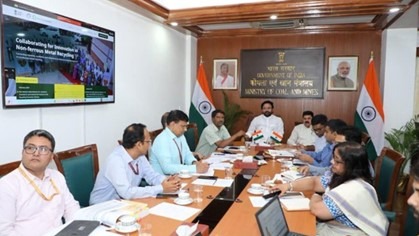
- In a major step toward advancing India’s circular economy and resource efficiency goals, Union Minister of Coal and Mines, Shri G. Kishan Reddy, launched the Non-Ferrous Metal Recycling Website and Stakeholders’ Portal on 7 May 2025. Developed under the National Non-Ferrous Metal Scrap Recycling Framework, the portal aims to streamline and formalize India’s recycling ecosystem for key non-ferrous metals such as aluminium, copper, lead, zinc, and critical minerals.
Why in News?
- The launch of this portal signifies a strategic push by the Government of India to promote sustainable development, reduce dependence on imported raw materials, and facilitate evidence-based policymaking through real-time data and a centralized stakeholder platform.
Objectives and Core Aims:
- Establish a national digital platform for recyclers, dismantlers, traders, and collection centers.
- Enable comprehensive data collection and analysis to guide policy formulation.
- Promote standardization, certification, and industry participation.
- Map skill gaps and drive workforce development across the recycling value chain.
Portal Details:
- Official URL: https://nfmrecycling.jnarddc.gov.in
- Launch Date: 7 May 2025
- Launched by: Shri G. Kishan Reddy, Union Minister of Coal and Mines
- Supported by: Jawaharlal Nehru Aluminium Research Development and Design Centre (JNARDDC)
Key Features:
- National registry for all stakeholders in the metal recycling sector.
- Access to real-time data on:
- Raw material flows
- Technology deployment
- Recycling capacities
- Workforce statistics
- Tools for performance benchmarking of registered entities.
Identification of:
- Infrastructure gaps
- Skill development needs
- Regional and sectoral priorities
- Regular updates on:
- Policy changes
- Stakeholder meetings
- Research and innovation outcomes
Significance:
- Promotes self-reliance (Atmanirbhar Bharat) by minimizing foreign raw material dependency.
- Supports Make in India by strengthening the domestic recycling industry.
- Aligns with India’s commitments to sustainability and global climate goals.
- Facilitates a more efficient, data-driven, and transparent value chain for non-ferrous metals.
The launch of the Non-Ferrous Metal Recycling Portal is most relevant to which of the following Sustainable Development Goals (SDGs)?
- SDG 9 – Industry, Innovation, and Infrastructure
- SDG 12 – Responsible Consumption and Production
- SDG 13 – Climate Action
- SDG 7 – Affordable and Clean Energy
Select the correct answer using the code below:
A. 1 and 2 only
B. 1, 2 and 3 only
C. 2 and 4 only
D. 1, 3 and 4 only
Answer: B. 1, 2 and 3 only
Explanation:
- SDG 9 is addressed through industrial standardization and innovation in recycling.
- SDG 12 is directly related to resource efficiency and sustainable recycling.
- SDG 13 is indirectly supported through reduced mining and environmental impact.
- SDG 7 is not directly relevant to non-ferrous recycling.
All Eyes on Poonch Attack: A Humanitarian Crisis Amid Rising Tensions
Syllabus:Security
- The phrase “All Eyes on Poonch Attack” has gained widespread traction across social media, symbolizing the mounting domestic and international concern over the humanitarian emergency unfolding in the Poonch district of Jammu and Kashmir. The crisis was sparked by Pakistan’s retaliatory shelling following India’s Operation Sindoor, a targeted counter-terrorism operation launched in response to the April 22, 2025 Pahalgam terror attack, which claimed 26 Indian civilian lives.
Operation Sindoor: The Catalyst
- In the wake of the Pahalgam terror attack, India launched Operation Sindoor to dismantle terrorist infrastructure in Pakistan and Pakistan-occupied Jammu and Kashmir (PoJK). The operation specifically targeted camps linked to groups such as Jaish-e-Mohammed and Lashkar-e-Taiba.
- While India emphasized the non-escalatory and anti-terror nature of the operation, Pakistan’s response escalated tensions significantly. Intense cross-border shelling ensued, with the civilian population of Poonch bearing the brunt.
Pakistan’s Retaliation: Civilian Casualties and Cultural Losses
- Pakistan’s artillery shelling across the Line of Control (LoC) struck multiple civilian areas, with Poonch emerging as one of the worst-hit districts:
- 12 civilians, including women and children, were killed.
- Places of worship—a Gurudwara, mosque, and Geeta Bhawan—sustained damage.
- Schools, markets, and homes were destroyed, displacing hundreds.
- This indiscriminate targeting has drawn sharp criticism, particularly for attacking religious and civilian infrastructure.
Attack on Central Gurudwara: A Tragedy for the Sikh Community
- Among the most devastating incidents was the attack on the Central Gurudwara Sri Guru Singh Sabha Sahib in Poonch:
- A raagi (hymn singer) and a granthi (priest) lost their lives.
- The Gurudwara’s outer wall was demolished.
- Several local Sikh traders and bystanders were killed or injured.
- The incident triggered nationwide outrage, with Sikh leaders and human rights advocates condemning the violence and demanding justice and international intervention.
Widespread Civilian Impact
- The shelling also led to:
- The destruction of numerous residential houses, forcing families to seek shelter elsewhere.
- Severe damage to schools, disrupting education for hundreds of children.
- Marketplaces targeted, causing economic paralysis and widespread panic.
- These actions have highlighted the indiscriminate nature of Pakistan’s retaliation and intensified global scrutiny.
Security Response and Ongoing Tensions
- Following the attacks, the Indian Army launched precision strikes on Pakistani military posts across the LoC. Despite calls for restraint, fears of a broader military escalation persist. Experts stress the need for diplomatic channels to prevent further civilian casualties.
- Meanwhile, relief and rehabilitation efforts are underway in Poonch, supported by both government and non-government agencies.
Strategic Importance of Poonch
- Geographic Significance:
- Poonch lies in the Jammu division of Indian-administered Jammu and Kashmir and is bordered on three sides by the LoC, making it highly vulnerable to cross-border hostilities.
- The Pir Panjal range isolates it from the Kashmir Valley, adding logistical and strategic complexity.
Historical and Administrative Background
- Ancient Era: Believed to be linked to Maharishi Pulastya, Poonch was historically known as Dravabhisar, with references dating back to Alexander’s invasion in 326 BCE.
- 19th Century: Came under the Sikh Empire, later becoming a jagir under Dogra rule.
- Post-1947 Partition: The Indo-Pak war of 1947–48 resulted in the division of Poonch between India and Pakistan.
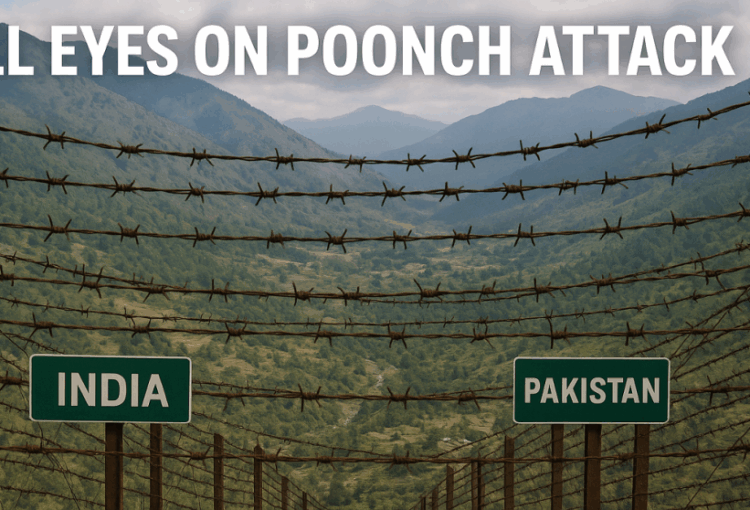
Administrative Structure:
Poonch consists of six tehsils:
- Haveli
- Mandi
- Mendhar
- Surankote
- Mankote
- Balakote
- These are further divided into 11 administrative blocks and 179 villages.
Cultural Mosaic of Poonch
- Demographics:
Poonch is a religiously diverse district: - Islam – 44%
- Sikhism – 33%
- Hinduism – 21%
- This diversity has historically fostered communal harmony, which is now under severe strain due to the ongoing violence.
Languages and Culture:
- Local languages include Pahari, Gojri, Kashmiri, Dogri, Urdu, and Hindi. The region is celebrated for its folk music, festivals, and interfaith traditions, making recent attacks on religious and cultural institutions particularly painful.
Conclusion
- The crisis in Poonch underscores the human cost of geopolitical conflict. While strategic and security imperatives dominate headlines, the spotlight on Poonch must serve as a reminder of the urgent need for de-escalation, humanitarian aid, and protection of civilian life. The global community, too, has a role to play in urging restraint and upholding the values of human dignity, religious freedom, and peace.
Consider the following statements regarding Operation Sindoor and its aftermath:
- Operation Sindoor was India’s retaliatory response to a terror attack in Poonch district.
- The operation specifically targeted terror infrastructure in Pakistan and Pakistan-occupied Jammu & Kashmir.
- Following the operation, Pakistan’s artillery response deliberately targeted religious and civilian sites.
- The Indian government officially categorized Operation Sindoor as a cross-border war declaration.
Which of the statements given above is/are correct?
A. 1 and 4 only
B. 2 and 3 only
C. 2, 3, and 4 only
D. 1, 2, and 3 only
Answer: B
Explanation:
- Statement 1 is incorrect: The trigger was a terror attack in Pahalgam, not Poonch.
- Statement 2 is correct.
- Statement 3 is correct: Civilian areas including religious sites in Poonch were hit.
- Statement 4 is incorrect: India maintained the operation as non-escalatory and not a formal war declaration.
